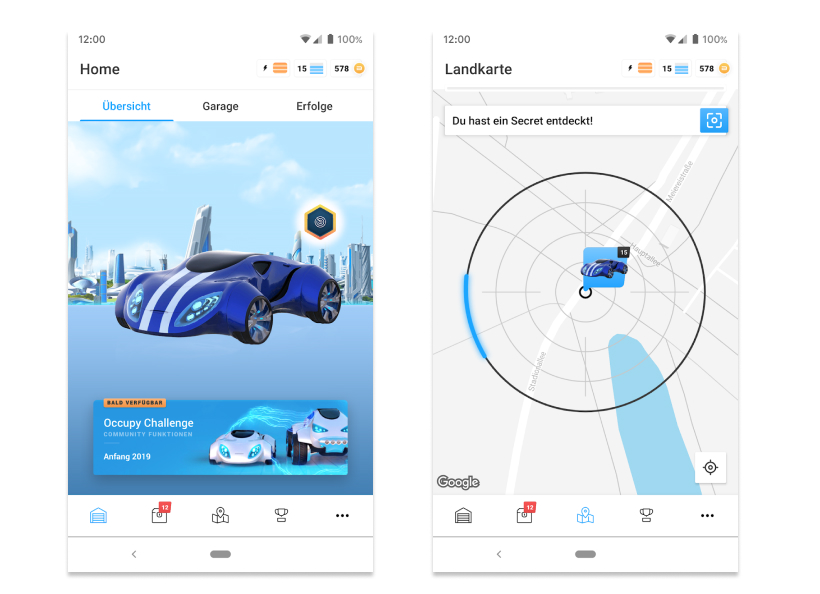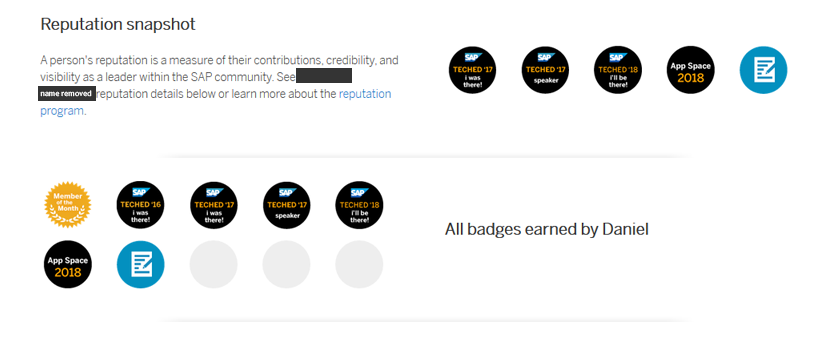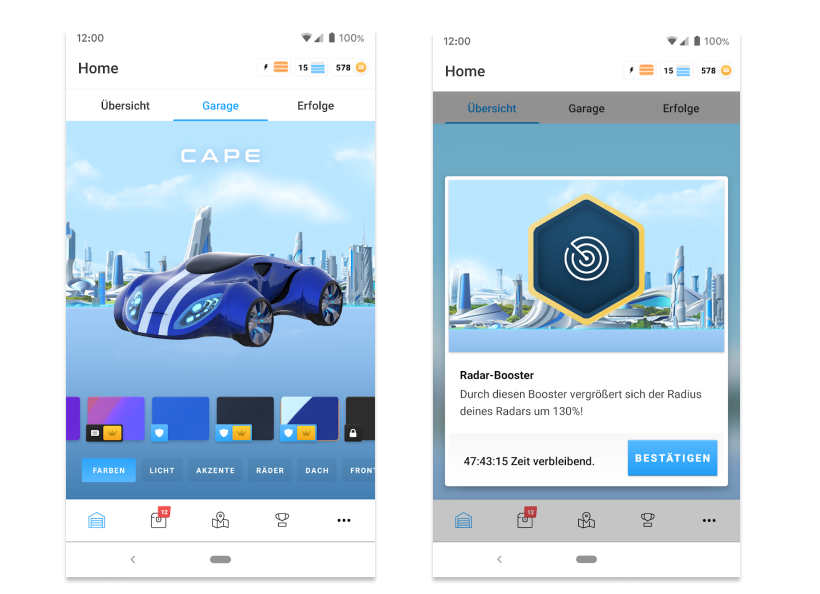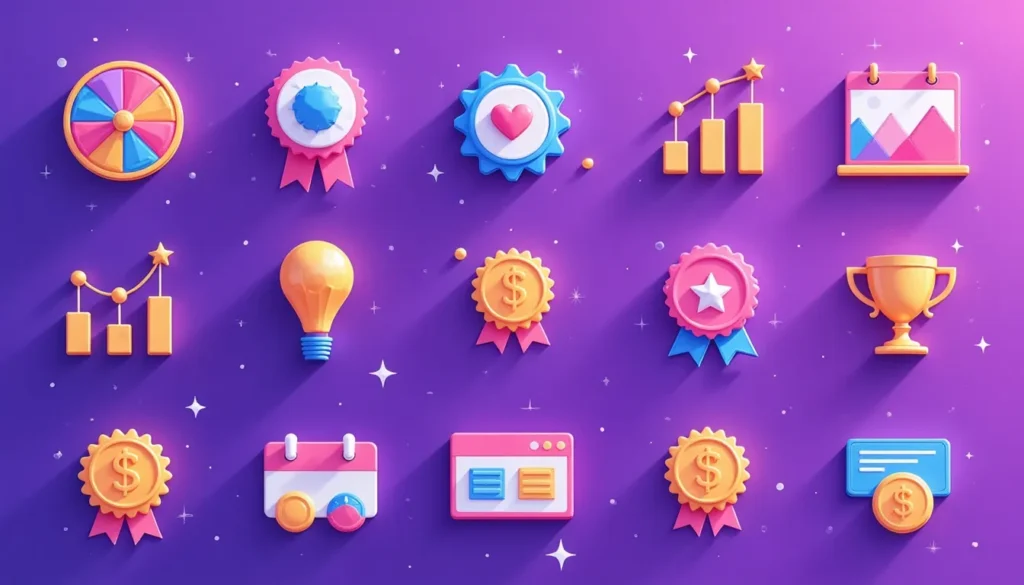Most loyalty programs use two mechanics only: Points and Status. As a result, the user experience is monotonous and often not very sustainable. Such loyalty programs belong to the category of Mercenary Loyalty.
In the US, people on average belong to a total of 15 loyalty programmes – but they use only one of them regularly. The reason for this is that most loyalty programs are boring, extrinsic and not very effective in creating sustainable engagement.
However, it is relatively easy to spice them up with the right gamification and digital engagement mechanics to make customer loyalty more effective and powerful.
In this article, I present 10 gamification tricks to make loyalty programs more effective and increase customer retention rates.
[powerkit_toc title=“Table of Content“ depth=“2″ min_count=“4″ min_characters=“1000″]1. Onboarding
I hate having to read an instruction manual. When I buy a new product, I usually try it out until I get it right, or give up frustrated. That’s how most people feel.
Digital products have a big advantage over analog products – you can integrate the manual into the user experience and introduce people step by step to the complexity of your product.
That’s exactly what onboarding is: During his first steps in the experience, you take the customer by the hand and show him, in a motivating way, which functions the loyalty program has, what there is to gain, how to earn points, and so on.
The big advantage of good onboarding is the reduction of dropoffs from new members who are overwhelmed with the first use, don’t understand the program, or simply don’t even discover some of your greatest features.
A good example of successful onboarding is the loyalty program of Volkswagen and Porsche Austria.
User who download the Loyalty Program app called BONEO and want to become a member are first guided through the individual features and benefits of the program step by step. They don’t even need to sign up with their email address just yet. The whole registration process takes place after the onboarding is done.
During the onboarding, users immediately receive some points, get their own avatar and can win a reward straightaway. Then they get introduced to the various features. Only afterwards (the whole onboarding takes about 1-2 minutes), users are asked to create an account – in order not to lose the points and rewards they just earned.

Source: AppStore
2. Fast Feedback
Generally speaking, the shorter any delay between an action and feedback, the better. If you want to change the temperature of the water in the shower, but after turning the lever, nothing happens, so you turn it again, just to find out that the temperatures does change, but it’s delayed, so you have to turn the lever again, you will know how frustrating slow feedback can be. It’s better to give fast feedback – an action should always trigger an immediate response.
When people do something, they want immediate feedback: Was it good? Did it work? Am I on the right track? Is there anything I can improve?
The faster the feedback is given, the more motivating an experience will be. This applies not only to showers and loyalty programs, but also to all experiences in general.
Let’s look at an example here. If I purchase an item in an online shop that has a loyalty program attached to it, I want to receive my points immediately.
I don’t want to wait until the item is shipped or until the order is progressed by the system the next day. If I don’t get my points straight away, I will start to wonder if something maybe didn’t work out.
If points arrive delayed, the program will generate frustration instead of joy: Users buy, refresh their points wallet and – nothing. No change. This is demotivating, and in the worst case, customers will ignore the program in the future because they think it won’t work anyway.
3. Community
Humans are social beings. Consequently, the interaction with others is motivating – we like to share, show, applaud or receive praise for our experiences.
Granted that, it’s all the more surprising that most loyalty programs completely ignore the power of community. Even though social interaction is one of the most powerful gamification mechanisms for reward programs to generate sustainable customer engagement – and thus loyalty.
Surely, building a community takes time, but it can help to keep customers engaged with your brand or products in the long run. In addition, a community is a great way to break away from the traditional principle of points.
Brands with strong and active communities can reward their members much more effectively – with things that have value within the community. Sometimes, this is way more efficient that just giving away points.
Take Wikipedia, for example. Contributors of Wikipedia spend many hours every week to correct articles and eliminate errors for free. But they have created a rewards program that effectively uses the power of community.
The SAP rewards program is another example of an online community that also utilizes a reputation system. This system comes in the form of visual badges that are awarded for activity. Of course, other users can see what badges you’ve earned already.

A community can also be a great way to give individual members visibility and recognition within the group – an intrinsic motivation.
Additionally, a community enables various other features that can be motivating – such as working collaboratively to achieve certain community goals. Or even work competitively against other users.
This leads us directly to the next gamification trick for loyalty programs.
4. Leaderboards
Leaderboards can be a great way to motivate users to interact with your program more often. People like to compare, and it can be a lot of fun to be a bit better than your colleague or another user who you’ve been competing with the whole time for the next higher rank.
But be careful: Not ALL people like the competition, and not all leaderboards are goal-oriented. Some people even shy away from competition, and prefer to work together with others rather than against them.
Here are three examples of how Leaderboards can be used as part of a loyalty program
- A ranking list for users whose comments in a community have been rated as helpful by others.
- Rankings for follow-up purchases in an online shop like: Who will make the longest spree of purchases on consecutive days?
- A ranking list for high-level users if the loyalty program supports a leveling system.
Leaderboards should always support the desired actions that you want your users to perform. For example, a leaderboard for accumulating the highest balance of reward points is counterproductive because it motivates members to keep their points and not spend them.
Leaderboards are a commonly used gamification mechanic in loyalty programs, but should be used with caution.
5. Loss Aversion
Loss Aversion means that people are reluctant to lose what they already have. Sometimes this is also referred to as the Sunk Cost Fallacy.
Loyalty programs can use this gamification mechanic in a very simple way: By directly offering new members a small welcome reward. This can be anything – points for example, or a gift or even some progress towards the next level.
In order not to lose those rewards, users have to perform certain actions. The above mentioned loyalty program BONEO from Volkswagen and Porsche Austria uses the Loss Aversion by giving new members some points and a loot box directly at first use.
Here is how this works:
In order to secure the points and the lootbox that users earn upon entering the loyalty program for the very first time, they need to sign up. They get those rewards BEFORE they have created an account, but in order not to lose their rewards again, they have to take action.
This is an effective way to increase your chances that users actually sign up and complete the registration process, which usually is a high friction point.
After successfully registering, new users additionally get their first badge, which serves as a win-state and, on top of that, is a nice way of onboarding them to the badge system in a playful way.

Source: AppStore
6. Curiosity & Mysteries
Not only kids love Kinder surprise eggs. Adults do, too. Sometimes they are just too afraid to admit it. If the egg’s content would also appeal to grown ups, I am sure I would still buy these from time to time.
But there are other, very similar products available. Gambling, for example. Even though the chance of winning is ridiculously small, many people purchase lottery tickets, because maybe, just maybe, they win. But actually, people don’t buy those tickets solely for the potential reward, they buy it for the feeling of excitement when the numbers are drawn.
Mysteries work in a similar way. It’s the same motivation of curiosity that makes us read books, tell stories, go to the cinema or simply watch the news. We want to know what’s happening and how the story goes on. Life’s a story, and everyone is dying to know what’s behind the next corner.
To put it simply: Mysteries and curiosity motivates people. Also, those motivations can be used for loyalty programs.
Instead of simply giving away points, loyalty programs can have their users play the lottery. Maybe they win a few points, maybe they win many? Maybe they win something else? Instead of a guaranteed amount of points upon purchasing a product, it’s much better to give away mystery rewards. By doing this, users not only are motivated by the extrinsic goods they can get, but also by the feeling of curiosity. What will it be this time?
Microsoft’s loyalty program for customers serves as a great example of how mysteries and curiosity can be used.
In Microsoft Rewards, users can unhide virtual cards they first need to purchase with their points. Sometimes they win nothing, sometimes they win a free „play again“-ticket, but in rarer cases, they can also win more valuable goodies like an XBOX ONE for example.
It’s obvious that users are eager to play those virtual gambling games to get a shot at caching in one of the greater rewards.

Users theoretically can earn enough points every day to play the virtual lottery at least once. This is achieved by using BING search and participating in some simple quizzes. As a result, each and every user has a chance at getting an instant reward every single day.
For Microsoft, of course, this is highly beneficial. Users are more motivated to check back regularly and eventually grow a habit of using Microsoft services – BING instead of Google, for example.
7. Variety of Choice
Linear designs are often boring. If there’s only one path to take, people lose interest rather quickly. In contrast, if there’s a variety of choices and people can use multiple strategies to get to a certain goal, the whole experience suddenly becomes much more motivating.
This is one of the more profound insights from gamification. In many games, there is not only one, but many ways to win. Players need to find out which one is best, or can use different approaches to beat the game. Non-linear experiences generally lead to more engagement.
Luckily, this effect can be used to empower loyalty programs. However, most loyalty programs use a linear and thus not very engaging design.
Let’s look at two examples to illustrate this. First, the linear design.
The rewards program of the german railroad company called Deutsche Bahn works in a very linear way. Users can earn points for every euro they spend on train tickets.
They can then use those points to purchase rewards such as a seat reservation.
For every euro spent, they get one point. This ratio is always the same, and the price of the rewards also doesn’t change.
Therefore, users can do the math: How long will it take to get to a certain reward? A 1st class reservation costs 750 points, so they need to spend 750 euros on train tickets.
Such a design leads to boredom rather quickly. The monetary value that members get out of the program is just not high enough to drive high engagement, and besides earning points in a linear way, there’s not much to do.
Now, let’s look at how the very same program could be improved with strategic choice.
If the rewards program of the railroad company powered strategic choices, users would have more reason to interact with it. They could be offered boosters that nets them more points when purchasing train tickets. Or lootboxes that hold various rewards. The gamble would attract many users. Another alternative to give users more choice in terms of earning and burning points would be to implement combinations. For example, pairing a train ticket with a coffee could give you some extra points, but only on mondays, whereas on fridays, the combination of train tickets and seat reservations adds a bonus.
There are many possibilities here. The point is that implementing strategic choice and thus making the whole experience non-linear usually increases the motivation of your users to interact with the programme.
8. Special Content
To make an experience appear vital and fresh, sometimes it’s beneficial to use special events. Those events can be anything – seasons, challenges, easter eggs, temporary content or winter specials, for example. During those events, because there is something out of the ordinary, people become curious, and, if there are attractive yet limited rewards to be won, they usually spend some extra money on your business.
This gamification trick is especially true for loyalty programmes, because it’s fairly easy to implement.
Let’s take a look how digital games use special content to drive revenue.
Fortnite is an online game that is free to play. That means that users can download and play for free without paying a single cent for it. However, the game is hugely successful and makes millions of dollars every year.
To achieve this, Fortnite powers a system where players can purchase cosmetic items, called „skins“. Those skins alter the appearance of a players avatar, but do not add any competitive advantage.
In order to boost sales, Fortnite regularly offers special events where special skins are presented that can be purchased only for a limited time – winter skins, for example, or halloween skins.
Fortnite pays alot of attention to carefully marketing their special events. As a result, people are highly interested in getting those skins that, if they don’t buy it during the event, can never be bought again. They are more than happy using their hard earned money for those digital cosmetics even though they, apart from looking nice, don’t add any advantages.
The video belows showcases one of Fortnite’s winter events. Of course, they sell winter skins accordingly that people can purchase.
This principle can be used for loyalty programs, too. Examples include
- Saisonal rewards.
- Timed boosters on certain days.
- Special events that let users not only earn additional points, but also offer special rewards that are only available during those events.
- Badges that users can earn for participating in those events.
There are so many possibilities to raise the awareness and attractiveness of a loyalty program by introducing special content, and, as a result, lead to increased engagement for its members.
With simple events like the ones mentioned above, companies can effectively empower the customer experience of their loyalty programs. Usually, it’s more than worth the hassle, because sales and marketing visibility during such events increase by a huge margin.
9. Infinite Progress
Most loyalty programs use simple points mechanics. This is not very motivating, nor does it work very well. Some loyalty programs use a status mechanic on top of that, but getting to the highest status is usually so hard and time-consuming that this mechanic is only attractive for a small but high-value target group.
But what about all the others? What most loyalty programs don’t use is an infinite progress system. Such a system rewards people for everything they do within the program with a currency that only goes up. Usually, this takes the form of a leveling system.
Progressing, in general, motivates people. Everyone wants to progress, reach their next goal or get to the next higher rank. An empty account balance or decreasing of points, on the other hand, is not very motivating.
But the latter one is exactly what happens in most loyalty programs. If a members uses all his points to purchase a reward, his account balance will be empty – and thus his motivation to fill it up again is very low. There’s risk for people to drop out at that point, because they fear the effort it takes to earn new points.
This problem can be countered out by using infinite progress mechanics. If there is a currency that always goes up and never goes down, people feel rewarded, even when they spend their points that have a monetary value. Because, if they leave the program now, they still would lose all the „infinite“ progress they’ve already made!
Many games, for example, use systems like that very effectively. Usually in the form of „levels“, users gather experience points for everything they do and „level up“ upon reaching specific thresholds. Those levels, or ranks, whatever you want to call it, can be used to gain visibility inside the community or to unlock new functions and features.
As a result, people feel proud of the level they’ve already achieved and motivated to get to the next one at the very same time.
10. Scarcity
Scarcity is a very powerful principle. It’s become widely known based on the work of Robert Cialdini who wrote a book called „Influence“, which, if you haven’t read it already, should definitely check out.
The more scarce something is, the more we want it. That’s why gold for example is so valuable – it’s rare (any shiny) and therefore people want it. If it was only shiny but not rare, it would be worth much less. The scarcity adds value.
To illustrate this, let’s look at a very simple example. Let’s assume, for a moment, you’re about to buy new shoes and visit a shoes store. Your eyes see a pair you like instantly. But then the sales person approaches you and says: This is the pair you want? It’s the only one I have left, all the others ones have already been sold out. Be quick, because there is another person interested in buying those as well!
The second the sales persons says those magical words of scarcity, the perceived value of the pair of shoes will go up. Now you really need to get them!
Scarcity is a very famous gamification trick. Luckily, it can be used for loyalty programs quite effectively.
Here’s an example of how Volkswagen Group and Porsche Austria used the principle of scarcity in their loyalty program.
In BONEO, users can find special digital items that they can equip their avatar (in the form of a digital car) with.
Some of these items are very rare and, thus, valuable. Because members of the programme know which items are scarce and which are more common, users with some of the more rare items attract attention and visibility inside the community.
As a result, everyone wants to get those valuable special items, and the engagement and motivation to interact with the program increases.
All mechanics at a glance
These 10 gamification mechanics for loyalty programs are of course only a small part of what you can do to make customer loyalty more efficient.
However, based on my experience, these mechanics can be used to drastically improve almost any program with manageable effort.
For a better overview, I have summarized these 10 Gamification mechanics in the following info graphic.

10 Gamification Tricks for Loyalty Programs
Which gamification tricks do you find most interesting?

Boost loyalty program effectiveness with these gamification tricks! MyCred provides the tools to elevate customer engagement and rewards